Aquaculture - code of practice: consultation analysis report
Summary of the analysis of responses submitted on the consultation on the draft aquaculture code of practice: containment of and prevention of escape of fish on fish farms in relation to marine mammal interactions.
3. Analysis of consultation responses
3.1. Introduction
3.1.1. Aim
The aim of this section is to provide comprehensive analysis and a summary of key findings of the comments received from the 39 respondents who provided responses to the consultation.
3.2. Consultation analysis approach
3.2.1. Wider approach
A mixed method approach was adopted for the consultation analysis, providing a comprehensive review of the qualitative and quantitative data.
For the purposes of this report, the terms "response" and "respondent" were defined as explained below. This explains the difference between the person or persons who provided the response, and the content of the response provided.
- Response - The individual comments received from a respondent for the consultation;
- Respondent - The business group, individual, organisation or sector that submitted the response for the consultation.
As part of the consultation analysis, respondents were categorised into the relevant business group, individual, organisation or sector to which they relate. The respondent categories are as follows:
- Individual respondent
- Environmental organisation
- Aquaculture Production Business ("APB") / APB representative body
- Fisheries or other board / trust
- Local authority
- Research body
- Other private business
- Legal professional body
3.2.2. Quantitative data approach
The quantitative data were identified as the "tick box" response included in Question 1 only. This included the responses received via the online consultation and email.
3.2.3. Qualitative data approach
For the purpose of this report, qualitative data have been identified as responses received within the 'free text' section for Questions 2, 3 and 4. Qualitative responses included the responses received via the online consultation or the emails sent directly to Marine Scotland regarding these questions.
3.2.3.1. Coding framework
A coding framework was developed and used to analyse the qualitative data received for the consultation, helping to ensure consistency across responses received.
A coding framework is a way of indexing or categorising the text to establish and identify key themes and issues in qualitative comments. This involves reviewing the qualitative comments received, searching and identifying concepts and finding relations between them. The coding framework allows for data to be analysed so you can examine and analyse the comments in a structured way.
Creating the coding framework involved reviewing the questions asked in the consultation, to identify potential key themes and issues that were likely to be raised in the responses.
The coding framework was designed to reflect the level of detail that is expected in this report to allow for useful grouping of responses.
The coding framework was a 'live document' which was regularly updated; both in content of existing codes and the addition of new codes, throughout the analysis of the consultation responses. This helped to ensure the analysis was flexible yet reliable, capturing all issues raised in the consultation.
Responses were individually analysed against the coding framework drawing out the range of positive, neutral and negative comments relating to the various questions set out in the consultation. Responses were not restricted to one code per response. There was no limit on the number of codes that could be assigned per response.
The consultation responses included generic comments or observations that did not directly relate to the questions set out. The coding framework has made provisions for this.
Some of the codes used have overlap both in content and wording. This is due to the nature of the responses received. Responses that share similar overlapping themes but are different in content were coded separately from one another.
Below is a sample of the codes used to undertake the consultation analysis;
- Enforcement of the Code
- Challenges/Practicalities of implementing the Code
- Clarity of the Code
3.2.3.2. Coding Quality Assurance
Two different persons were used to undertake each review for the four questions.
3.2.3.3. Key Comments raised
The key comments were identified as a response raised by over ten respondents in a single question.
3.2.3.4. Assumptions and limitations of the coding framework
Assumptions of the coding framework include:
- Multiple perspectives including voices of the analysts, the respondents and the readers interpreting the coding framework result;
- Coding analysis is context-bound; and
- Categories of interest emerge from the respondents, rather than set by the researcher before conducting the analysis.
Limitations of the coding framework include:
- Using quantitative methods to analyse qualitative responses. Some qualitative researchers (Creswell, 2013) are against the principle of coding in qualitative research, because "counting conveys a quantitative orientation of magnitude and frequency contrary to qualitative research."
- Coding risks the possibility of overlooking the significant and interesting minority data. Saldaña (2016) warns of the possibility that a unique code or one that appears a limited number of times may be key to the outcome of a report's findings.
3.2.4. Limitations and quality of responses
Respondents who did not provide a written response or their response was incomplete for the consultation question were considered and counted as "No Comment". The number of free text responses for each question reduced going from Question 2 to 4.
3.3. Consultation responses
In total, 39 respondents provided responses for the consultation; 35 of the respondents provided their responses through the online consultation and four of the respondents provided an email response to the consultation for the four questions.
Responses that were structured in the same way as the online consultation were broken down and analysed per question in the same way as the online consultation responses received. The email responses that provided a more over-arching comment on the Code that did not make specific reference to any one question, were included in the analysis of the question they were most relevant to. This helped to ensure a consistent approach was adopted for the consultation analysis.
A breakdown of the number of the responses to the consultation per respondent category is provided in Table 1.
| Respondent category | Total | Percentage |
|---|---|---|
| Individual respondent | 19 | 48.72% |
| Environmental organisation | 5 | 12.82% |
| Aquaculture Production Business (APB) / APB representative body | 5 | 12.82% |
| Fisheries or other board / trust | 5 | 12.82% |
| Local authority | 1 | 2.56% |
| Research body | 1 | 2.56% |
| Other private business | 2 | 5.13% |
| Legal professional body | 1 | 2.56% |
3.4. Consultation response analysis
3.4.1. Key comments raised
Over the four questions, 156 responses were received from the 39 respondents.
Responses that did not provide a comment were still considered in the total number of responses received. Of the 156 responses, 44 were coded as "No Comment".
A summary of the key comments raised in the free text sections for as part of the consultation is provided below:
- Twenty respondents raised concerns that implementation of the Code amongst APBs is not enforceable. Common comments within this included:
- Concerns around non-compliance and inconsistency of self-reporting by APBs;
- Concerns about inadequate penalties for non-compliance.
- Thirteen respondents raised challenges and issues with practicalities of implementing the Code. These comments cited timescales and content of reporting as the main barriers to implementation but also raised some gaps or contradictory guidance to be addressed.
- Ten respondents asked for clarifications on the scope, phrasing and terminology used in the Code
- Twenty respondents also made suggestions and proposals which were considered to be beyond the scope of the Code. These included:
- Calls for the Code to manage, control or ban the use of acoustic deterrent devices (ADDs).
These key comments, together with other comments raised in the consultation, are addressed directly in section 4 of this report.
3.4.2. Quantitative Analysis of Question 1
The comments recorded in this section were "tick box" only responses, received for Question 1, which asked "Do you support the introduction of the Code?" The only "tick box" options were Yes or No. It was not mandatory to answer this question and where a respondent chose not to tick Yes on No, the response has been recorded as "Not Answered".

1. Do you support introduction of the Code? (All respondents)
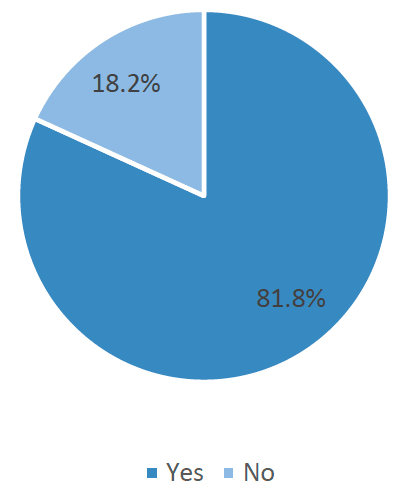
1. Do you support introduction of the Code? (Not answered removed)
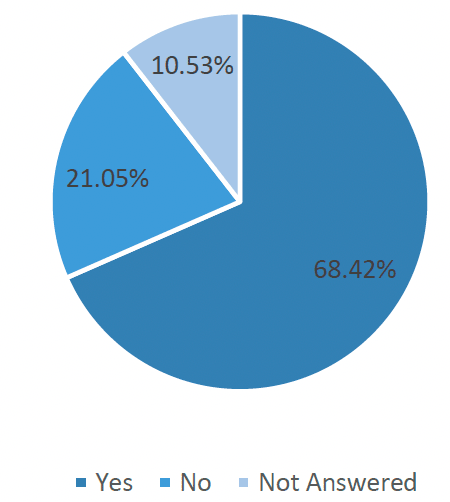
Individuals
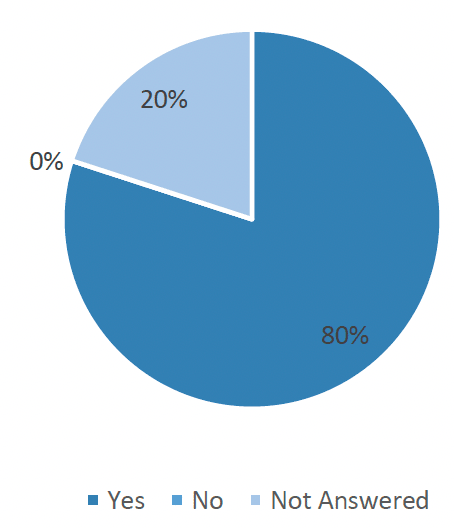
Environmental Organisations
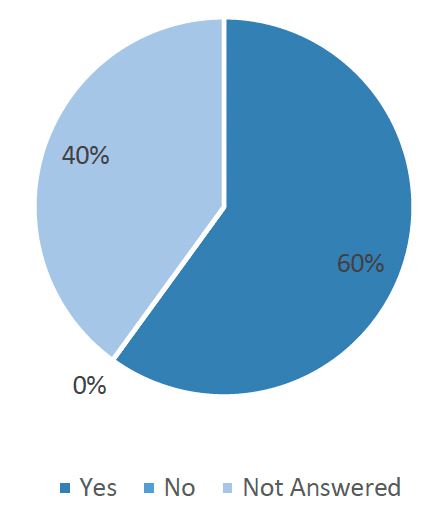
APB / APB representative bodies
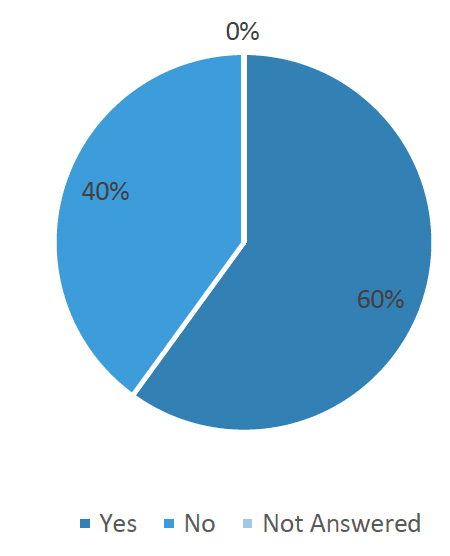
Fisheries or Other Board / Trusts
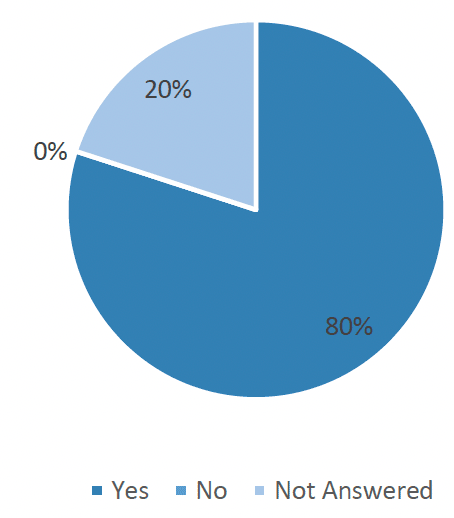
Other Organisations
3.5. Key Findings
A total of 39 respondents submitted answers and comments for the four questions asked as part of this consultation. Most of the respondents were identified as individuals, but responses were received across a range of different categories created to identify respondents.
Responses received for the consultation varied significantly in length, detail and technical content.
Overall a majority of the respondents supported introduction of the Code (69.23% of respondents and 82.82% of respondents who provided an answer to Question 1 directly). Some respondents opposed the introduction of the Code (15.4% of respondents and 18.2% of respondents who provided an answer to Question 1 directly). All respondents opposing introduction of the code were categorised as either fisheries or other trusts / boards or individuals.
Even amongst respondents who did not support the introduction of the Code or provided no direct answer, comments mostly recognised that introduction of a Code was a positive step that brought Scotland further in line with internationally recognised standards. However, there was some disagreement regarding the scope of the Code, with conflicting calls for both expanding and limiting the content of the Code, including in relation to the proposed mandatory standards. The greatest level of concern on a single issue, within scope of the consultation, was registered in relation to the enforcement of implementation of the Code.
A direct response to these concerns and indication of where changes have been made to the content of the Code and associated forms is included in section 4.
Contact
Email: David.Robertson3@gov.scot
There is a problem
Thanks for your feedback